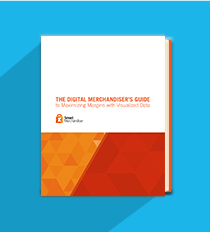It’s well known that when it comes to running an online business, repeat customers are far more valuable than new ones. According to a recent report by Adobe, 40 percent of eCommerce revenue comes from repeat shoppers. And since these customers make up such a small percentage of total visitors (just eight percent), marketing departments would need to bring in five to seven new customers in order to match the purchasing power of just one repeat shopper. This means that if you aren’t focusing a significant amount of attention on your existing customer base, you could be missing out on some serious revenue.
One way to maximize the value of your repeat visitors is with the art of the upsell. Upselling, and cross-selling, requires minimal extra resources and, if done right, can provide very healthy returns. In fact, back in 2006, Amazon reported that upselling and cross-selling accounted for 35 percent of its revenues, and after a decade of refinement and advancements in their techniques, you can imagine that number has only gone up. So to help your ecommerce enterprise take advantage of this revenue-generating power, here are a few key upselling tips:
Know Your Customer
Before you can effectively upsell your customer, you need to have a good idea of their shopping habits and preferences. This means offering intelligent, customer-focused suggestions based on products that shoppers have looked at, showed interest in, or already placed in their basket. To do this, you need having solid, reliable analytics and an effective eCommerce merchandising system that can learn from customer behavior, anticipate which products might interest them, and present them with options in real-time.
Keep Items Relevant
- Upsell - Make sure the upsell is relevant to the customer’s purchase/purchasing habits. If your customer is buying a laptop computer, and your site recommends that they buy a completely different, more expensive laptop, chances are you’re not going to make that upsell. However, if your site suggests, say, an upgrade in processing power or an added SSD drive, your customer is much more likely to see the value in what you’re offering and make that extra purchase.
- Cross-sell – Just like with the upsell, the cross-sell recommendation must be relevant to the original product being purchased in order to be successful. Again, if that same customer is buying a laptop, and your site recommends that he/she also buys a flat screen TV from the same manufacturer, they’re probably not going to go for it. Keep your recommendations relevant (laptop case, mouse, external hard drive, etc.).
Limit Available Options
If the famous “Jam Study” taught us anything, it’s that we should limit the options we offer our customers. When customers are faced with too many choices, they tend to get overwhelmed and often end up not making a purchase at all. That’s why you should limit your recommended upsells and cross-sells. Give your customers two or three good options to choose from and you will see much better returns.
Make Sure They Add Value
Your customers generally have a good idea of what they are looking for when they go shopping, so it helps not to think of your upsell/cross-sell items as mere auxiliary add-ons that your customers can take or leave, but as helpful suggestions that will actually improve the quality of their initial purchase. For instance, if you run an online clothing store and your customer is buying a pair of slacks, don’t just recommend that they also buy a shirt. Instead, show them a complete, composed outfit that includes their slacks, with an option to add the accompanying top in order to “complete the look”. This does the double service of making the slacks more attractive, and providing ideas on how to wear them—all while adding an incentive to buy the additional item.


